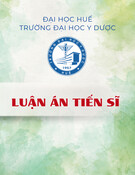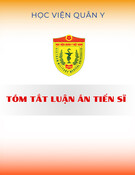
1
INTRODUCTION
Stroke due to proximal arterial occlusion of the anterior
cerebral circulation system has a very high mortality and disability
rate, possibly up to 60-80% in patients with simple internal carotid
artery occlusion or in combination with the middle cerebral artery.
Therefore, revascularization treatment in the acute phase is the most
important treatment to reduce mortality and sequelae.
Revascularization after acute ischemic stroke is associated
with improved clinical outcomes as well as reduced mortality. A
meta-analysis of 53 studies in more than 2000 patients showed a
close association between the rate of cerebral revascularization and
the improvement in clinical outcome after three months compared to
the non-revascularization group (odds ratio OR 4.43, 95% confidence
interval CI 3.32 - 5.91).
Currently, most hospitals could perform treatment technique
using intravenous thrombolytic agents for stroke patients with
anterior cerebral circulation occlusion in the window 4.5 hours after
the onset of symptoms, however the effect has not been significant in
these patients, for example revascularization with carotid artery
occlusion below 10%, occlusion of the middle cerebral artery in the
middle of M1 is 30%, occlusion of M2 is 42% ... Therefore, it is
necessary to have more treatment methods for cerebral
revascularization even though the patients have been used with
thrombolytic agents. Therefore, endovascular intervention to take
away thrombosis is very important, for patients who have not yet
been revascularized. Another problem is that in Western countries,
using the standard dose of thrombolytic agents is combined with
thrombectomy. In Vietnam, especially in Bach Mai hospital, using
low dose of thrombolytic agents 0.6 mg/kg is becoming regular
protocol, so how to access this combination? How is the effective of
method? That are the questions need to be studied. On the other hand,









































